Pigeons are one of the most popular pet birds throughout the universe. Pigeons can be classified into five groups. These are poultry pigeons, carrier pigeons, racing pigeons, fancy pigeons, and feral pigeons. Pigeons probably originated the rock dove in Europe, have been partially domesticated and carried to all parts of the world. They are accustomed to living in close association with human beings, and they are readily propagated to produce a collection of plumage or to provide squabs for the table. Pigeon diseases are the most common problems for the owners that may cause losses in many folds.
Most Common Pigeon Diseases
Pigeons diseases are a vital topic for the restraining of pigeons. It is necessary to know the characteristic of healthy pigeons to recognize the disease at its inception. A healthy pigeon is lively, active, and alert. A sick pigeon usually loses the healthy characteristics that are normal behavior, common pasture, average body weight, and standard rate and depth of respiration. I shall discuss the most common pigeon diseases in brief for your easy understanding.

1. Paratyphoid Infection (Salmonellosis) in Pigeon
Salmonellosis is a significant bacterial disease of all species of animals, men, and birds caused by Salmonella spp. It is characterized by well-known articular changes, diarrhea, and nervous disorders in pigeons. The general signs of the disease are loss of condition and weight, increasing drinking, green slimy droppings, swelling of the legs and wing joints, limping, infertile eggs, death in the shell, and dead at hatch. In this condition, you have to give your birds is oxytetracycline or ciprofloxacin. Furazolidone or enrofloxacin may be used. Ensure the hygienic management and supply an adequate amount of vitamin-mineral premix.
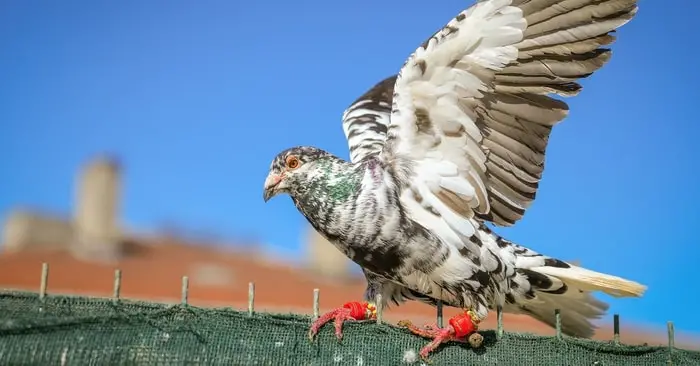
2. Pigeon Tuberculosis
Avian tuberculosis is a slow-spreading, usually chronic, granulomatous infection of semi-mature birds, caused by Mycobacterium avium. The signs of the disease are progressive weight loss and, ultimately, by starvation and death. There may consist of common lumps occurring either on the wing or the leg. Treatment of avian tuberculosis is not recommended because the disease is infectious for humans. The infected birds should be culled and buried under the ground or destroy by burning.
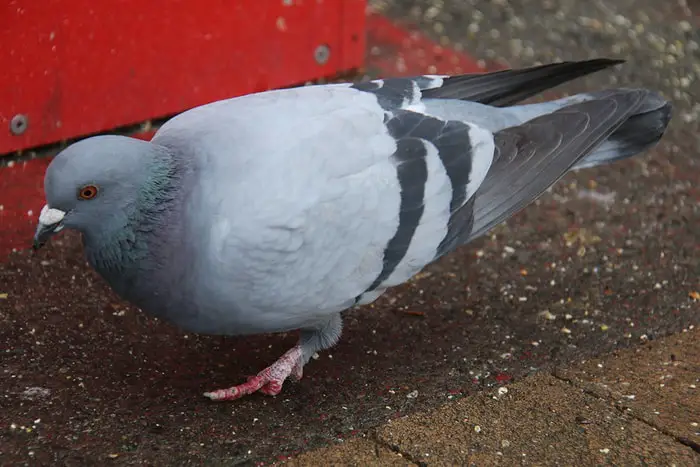
3. Pigeon Pox
Pigeon pox is a slow-spreading viral disease of pigeon caused by a giant DNA pox virus. The signs show may be the bare skin, particularly around the eyes on the beak and the feet. The secondary bacterial infection leads to pus formation in the scabby deposits. There is no satisfactory medication for pox due to virus etiology. The antibiotic should be given to prevent secondary bacterial infection. Disinfection must be carried out with a dominant virucidal agent. It is advisable to carry out vaccinations in the spring before the start of the flying season, and before the breeding season.
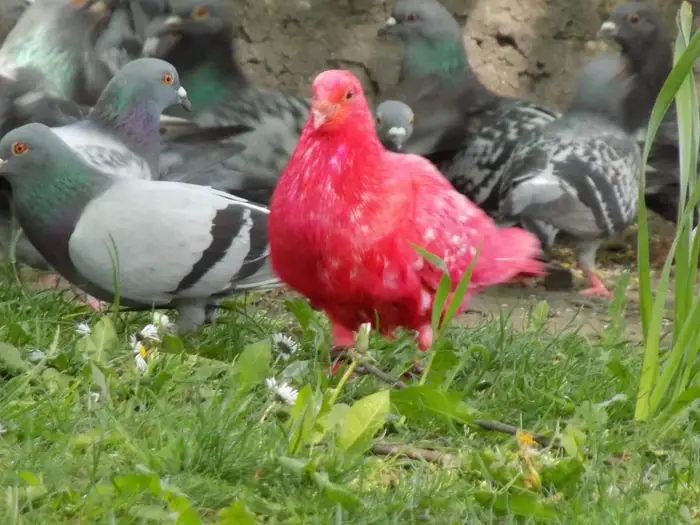
4. Pigeon Herpesvirus Infection (Smadel’s Disease)
Pigeon herpesvirus can affect all Columbiformes, including ferals, wild and aviary pigeons, and doves. It is caused by Herpesvirus classified as Alphaherpesvirus. Adults birds may develop liver disease, brain infection, and have occasional respiratory problems. There is no effective treatment unless dealing with precious birds. Acyclovir, an anti-herpes virus drug, has been used to treat herpes virus infections in birds, but it is expensive and needs careful monitoring.
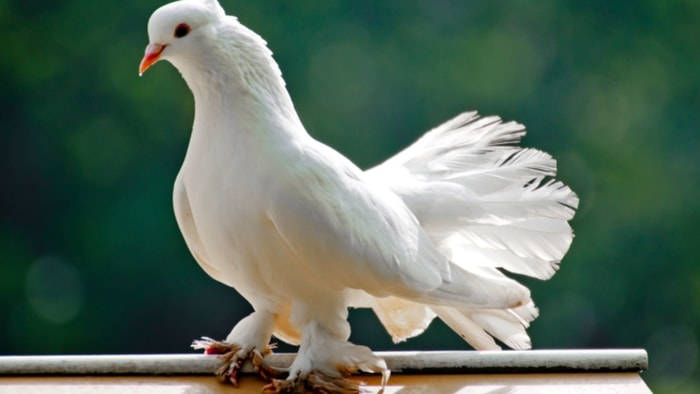
5. Aspergillosis in Pigeons
Aspergillosis is an acute or chronic fungal disease of birds, animals, and humans, caused by Aspergillus fumigatus. The bird’s ay show dyspnea (difficult breathing), greenish deposits on the tongue and palate, and skin scaling off with breaking of feathers. If aspergillosis is diagnosed, affected pigeons should be culled, and the contaminated feed and water should be removed. Your birds can be treated with Nystatin or Amphotericin B or other anti-mycotic agents.
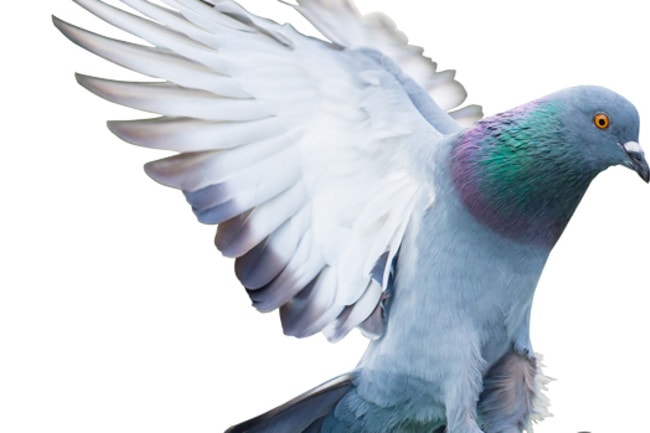
6. Canker in Pigeons or Trichomoniasis
The flagellated Trichomonas gallinae causes canker in pigeons affecting the upper digestive tract. The disease is worldwide distributed, and pigeons, turkeys, chickens, and raptors are commonly affected. Infected birds show a definite decrease in activity, ruffled feathers, reduced feed intake, weight loss, increased water intake, and loose feces. Cheesy yellowish substances can often be observed in the mouth or throat. In this case, you should be Control stress, maintain regular feed and withering schedules, sanitize drinkers regularly, isolate and observe any newly acquired birds for several weeks, and administer an anti-cancer drug regularly throughout the year.
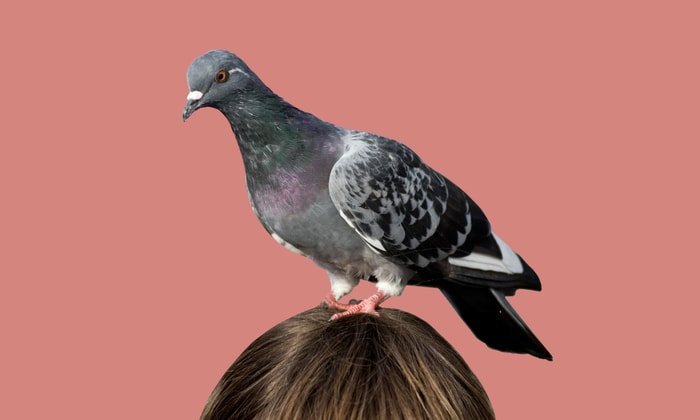
7. Pigeon Diseases: Plasmodiosis (Avian Malaria)
Avian malaria has a global distribution and is great economic significance is to the poultry industry. The disease is caused by Plasmodium gallinaceum, P. juxtanuclear, and P. durae. The main signs of the disease are fever, asymptomatic carrier, anemia, general weakness, and death in youngsters. Affected flocks you can be treated with Chloroquine and Chloroquine can also be added to the drinking water. It is essential to quarantine newly acquired birds, dust, or dip birds after mingling with others and eliminating contact with wild pigeons because curing this disease is very difficult.
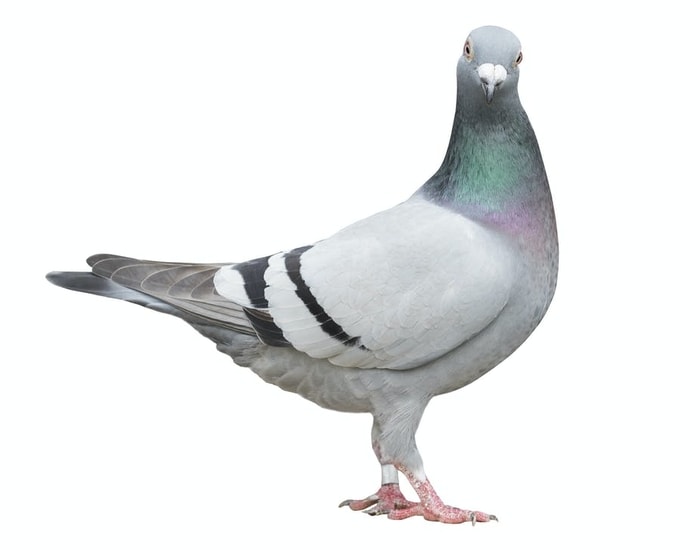
8. Pigeon Mites
Mites are obligate parasites, and that transmission is mainly by contact. Mites are small and much more common external parasites of the pigeon than is generally recognized. Some important mites which affect pigeons are red mite, feather mite, quill mite, scaly leg mite, depluming itch mite. Treatment of birds is the only palliative, and attention should be paid to the mite habits in buildings. You must have to spray insecticide 4 to 6 weeks during summer and 2 to 3 weeks interval during winter seasons.
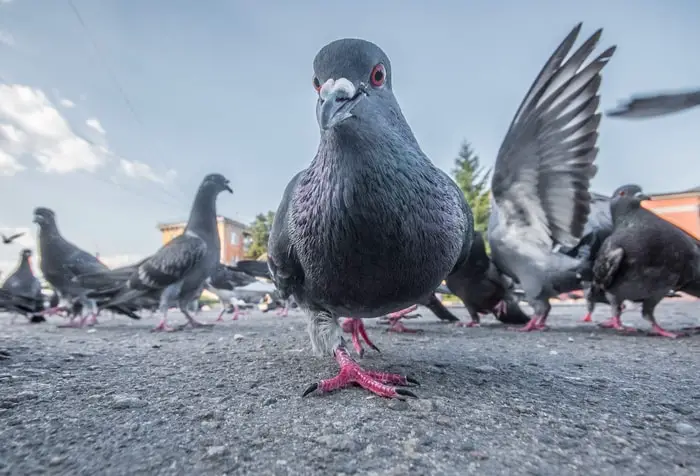
9. Pigeon Ticks Infestation
Ticks are arachnids that infest pigeons from time to time and suck blood. These parasites also attack other birds, mammals, and man. Some important ticks which affect pigeons are the Fowl tick, Argas columbarium, and Argas reflexus Fabricius. Argas columbarium is mainly ticked for a pigeon; that is why it is called pigeon tick. The birds must be removed from their house, and crates can be cleaned by scalding with boiling water or spraying with insecticide.
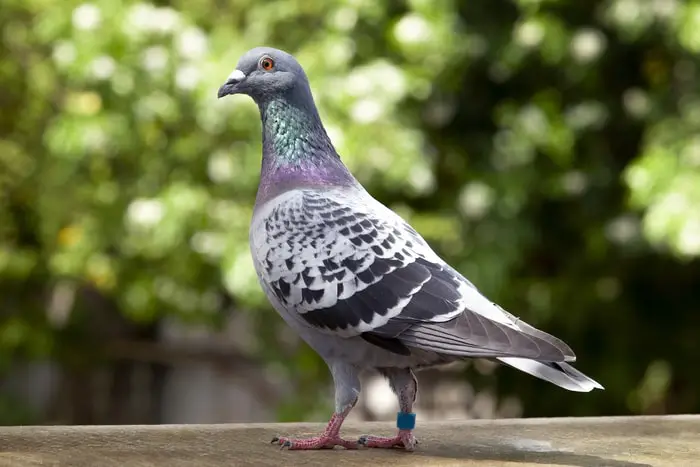
10. Pigeon Diseases: Coccidiosis
Coccidiosis is an intestinal protozoan disease caused by the protozoa called Eimeria labbeana and Eimeria columbarium. The signs of the disease are anorexia, slow race performance, loss of weight, slimy dark green droppings, lazy, poor flying, and thirsty and dehydration. You must have to use Sulphonamides in drinking water at the same or half the level recommended for chickens. It is necessary to throw out the feces daily from the lot and avoidance of stress of latently affected pigeons. A balanced diet with adequate vitamins, especially vitamin A, K, and B complex, significantly strengthens resistance and contributes to the disease’s prevention.
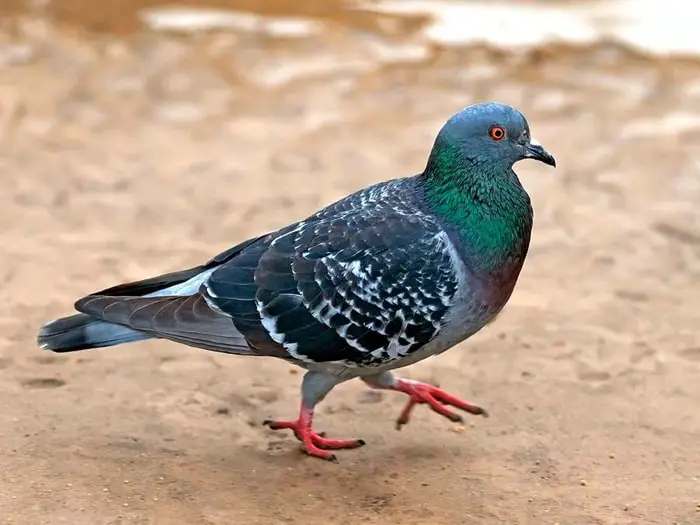
11. Ornithosis or Pigeon Chlamydia
Pigeon chlamydia is a zoonotic disease of birds and man, caused by the intracellular Chlamydophila psittaci. Ornithosis occurs throughout the world, and among poultry, it is sometimes seen in ducks and turkeys but rarely occurs in chickens. The affected birds may lose condition, nasal secretions, decreased desire to fly. Scratching the head and beak decreased performance, conjunctivitis, swollen eyelids, and wet eyes, sneezing, rattling and coughing, discolored wattles, and slime in the throat. Products containing chlortetracycline are the drugs of choice for the treatment of Ornithosis.
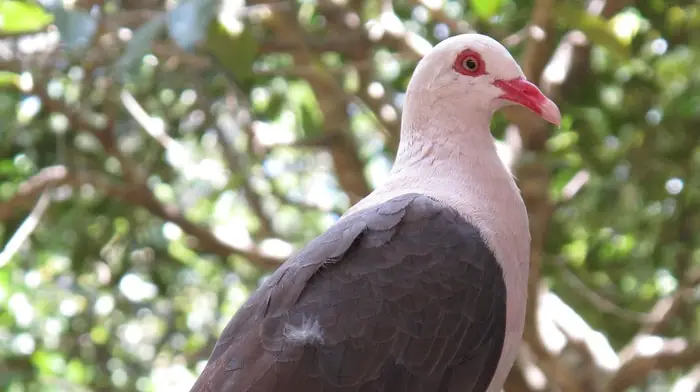
12. Pigeon Diseases: Mycoplasmosis
The chronic form of catarrh in pigeons often is called mycoplasmosis. It is caused by multiple infections with pathogens: bacteria, viruses, and pathogens belonging to the group of mycoplasma organisms. Mycoplasmosis occurs worldwide, particularly in chickens, turkeys, pigeons, and other birds. The signs are reduced flying performance, unwillingness to fly, rough gray scab inside the mouth, tongue and sticky palate, nose of dirty gray color, difficult breathing, throat inflammation, extreme noises at night, and stress results can cause death. Antibiotics that are effective against Mycoplasma organisms are used for prevention.
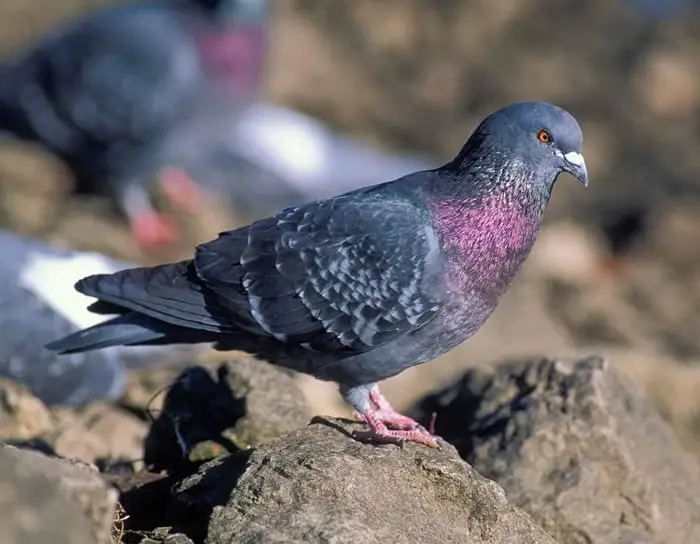
13. Pigeon Diseases: Colibacillosis
Colibacillosis is a bacterial infection that is caused by Escherichia coli and dramatically reduces the immune system. All ages can be susceptible, with the pigeons and children being more severe and causing deaths. Clinical manifestations are acute sepsis, granuloma, mild head swelling, swollen eyes, closed eyes, tears, peritonitis, and the E. coli destroys the ovary, and umbilical inflammation occurs.
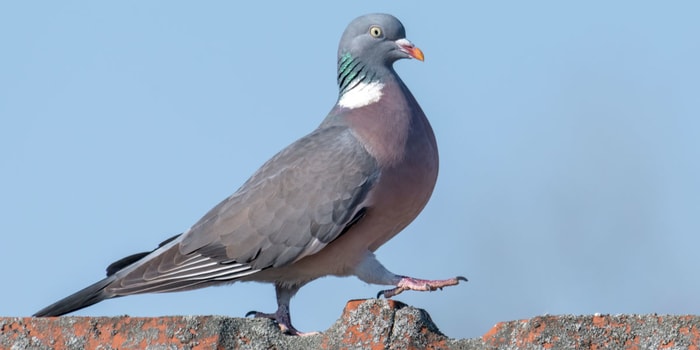
14. Pigeon Lice
Lice are the most familiar of all the external parasites of pigeons. They are not bloodsuckers but are biting insects. The essential lice of the pigeons are Slender pigeon louse or wing louse( Columbicola columbae) and little feather louse or brown louse (Goniodes demicornis) and comprehensive pigeon lice. If possible, pigeon lice should be killed without disturbing the birds, and insecticide-treated houses and surroundings best do this. Carbonates, carbaryl may be recommended as infective insecticides.
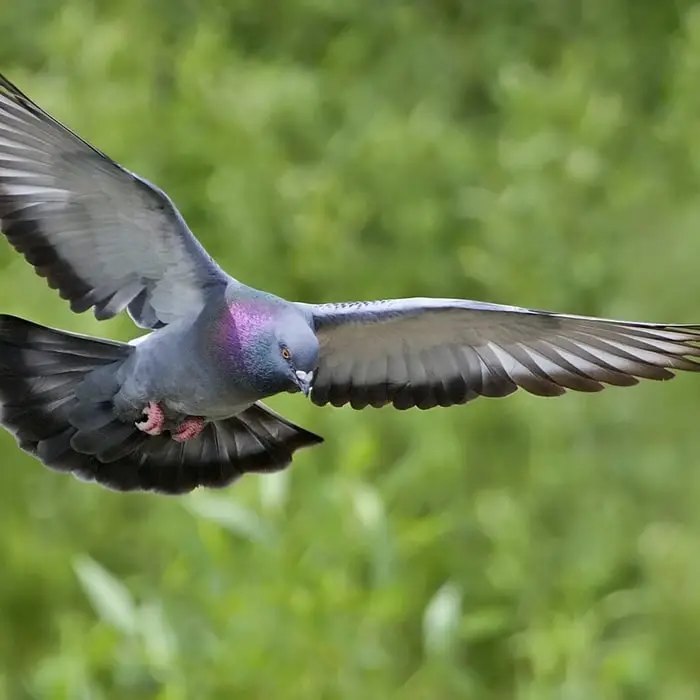
Concluding Remarks on Pigeon Diseases
Pigeons are the most popular pet birds as well as commercial birds. Pigeons have a great deal of economic importance. The importance of pigeons is in competitions, showing, recreation, and commercial poultry. Pigeon diseases are one of the vital issues for the owner. In my article, I have briefly discussed the most common pigeon diseases for you. I think this piece of knowledge will help you a lot.